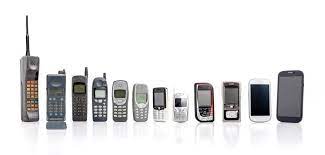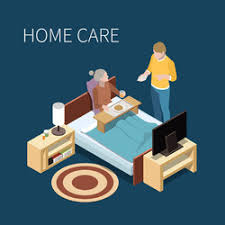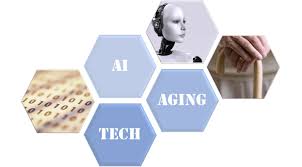The growing ecosystem of devices and products serving peoples’ health and well-being shows us that innovators already see the opportunity to serve the fast-growing market for self-care among people 50 years of age and up.
For nearly twenty years, one thing has felt inevitable: when boomers reach “old age,” senior living demand will surge. And yet ..
ChatGPT Health builds on consumer use of today's ChatGPT so responses are informed by your health information and context.
The prize honors .lumen’s Glasses for the Blind, an AI-based device that applies autonomous driving technology adapted for pedestrians. Using computer vision and local processing, the headset understands the three-dimensional environment in real time without relying on the internet or pre-defined maps and guides the user through subtle vibrations indicating a safe direction to follow.
The United States faces a fundamental mismatch between surging demand and insufficient capacity.

 he cell phone – imagine a connected life without it. The story of that invention, particularly the context of an AT&T monopoly of the time period, is instructive about what it takes to get an innovation into the market – when many are involved, including government agencies; and obstacles, in-house and competitors, are all around. According to
he cell phone – imagine a connected life without it. The story of that invention, particularly the context of an AT&T monopoly of the time period, is instructive about what it takes to get an innovation into the market – when many are involved, including government agencies; and obstacles, in-house and competitors, are all around. According to  Care workers – it’s not a shortage – it’s a crisis. People who need care workers will tell you – the media will tell you, and the industry will tell you. From the
Care workers – it’s not a shortage – it’s a crisis. People who need care workers will tell you – the media will tell you, and the industry will tell you. From the  The past few weeks have brought broad-based wails of AI anxiety. Last week in a meeting with some senior execs, there it was again – warning about scams, exploitation and worse. Then there is the AI laundry
The past few weeks have brought broad-based wails of AI anxiety. Last week in a meeting with some senior execs, there it was again – warning about scams, exploitation and worse. Then there is the AI laundry  An optimistic view of home care’s future as seen from 2012. Several times in the past decade, interviews were conducted with experts that lead to some reports about the home care industry. This chart came from a report, The
An optimistic view of home care’s future as seen from 2012. Several times in the past decade, interviews were conducted with experts that lead to some reports about the home care industry. This chart came from a report, The  What is the AARP AgeTech Collaborative? AARP’s AgeTech Collaborative launched in 2021 with a splash (and 50 startups) that has widened into an age wave, or a sort of Match.com for age-related companies to find others, including collaborators, sponsors, pilots, and more. Today’s collection includes 104 companies, many of whom have gone through the AgeTech Collaborative Accelerator process, including pitch competition, Accelerator program enabling entry into the
What is the AARP AgeTech Collaborative? AARP’s AgeTech Collaborative launched in 2021 with a splash (and 50 startups) that has widened into an age wave, or a sort of Match.com for age-related companies to find others, including collaborators, sponsors, pilots, and more. Today’s collection includes 104 companies, many of whom have gone through the AgeTech Collaborative Accelerator process, including pitch competition, Accelerator program enabling entry into the  The AI hype cycle is distracting everyone.
The AI hype cycle is distracting everyone. Rant on. So there is an upcoming meeting to attend. Now let’s see -- will it be conducted in
Rant on. So there is an upcoming meeting to attend. Now let’s see -- will it be conducted in  AI and older adults – powerful if enabled. There are few limits to the possible benefits of AI in its many forms, conversational, generative, Chatbots and more. Some say that we are in
AI and older adults – powerful if enabled. There are few limits to the possible benefits of AI in its many forms, conversational, generative, Chatbots and more. Some say that we are in  New report published -
New report published -